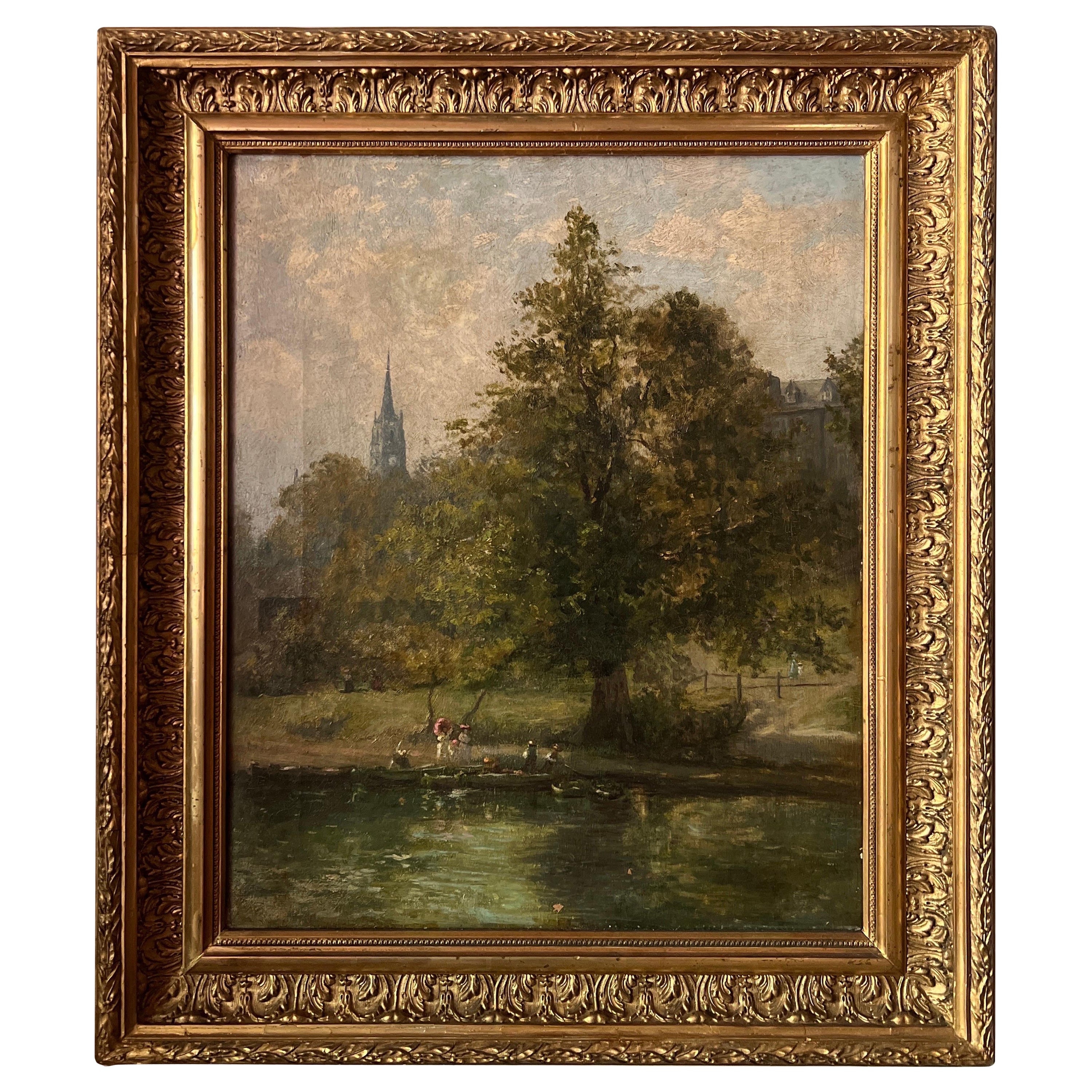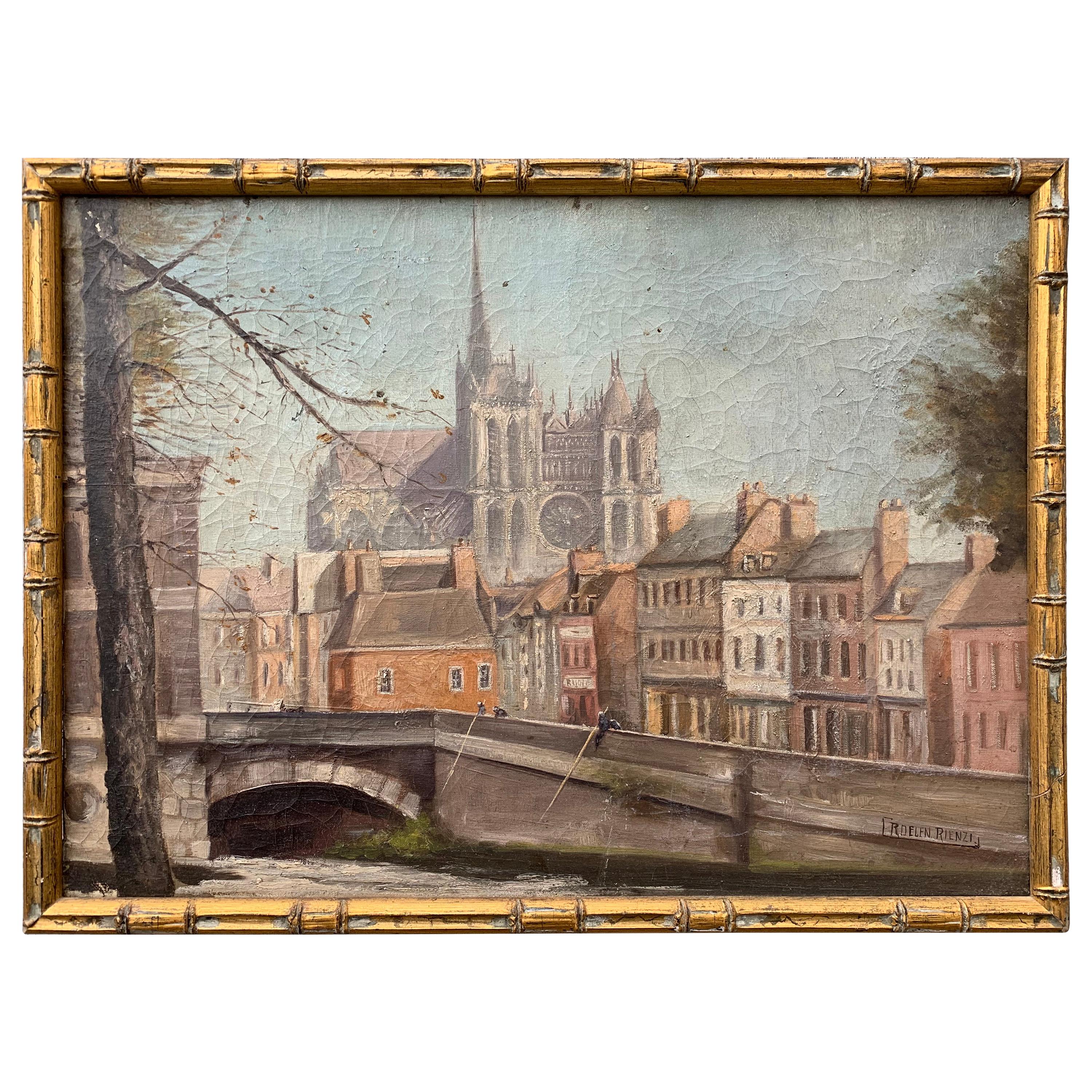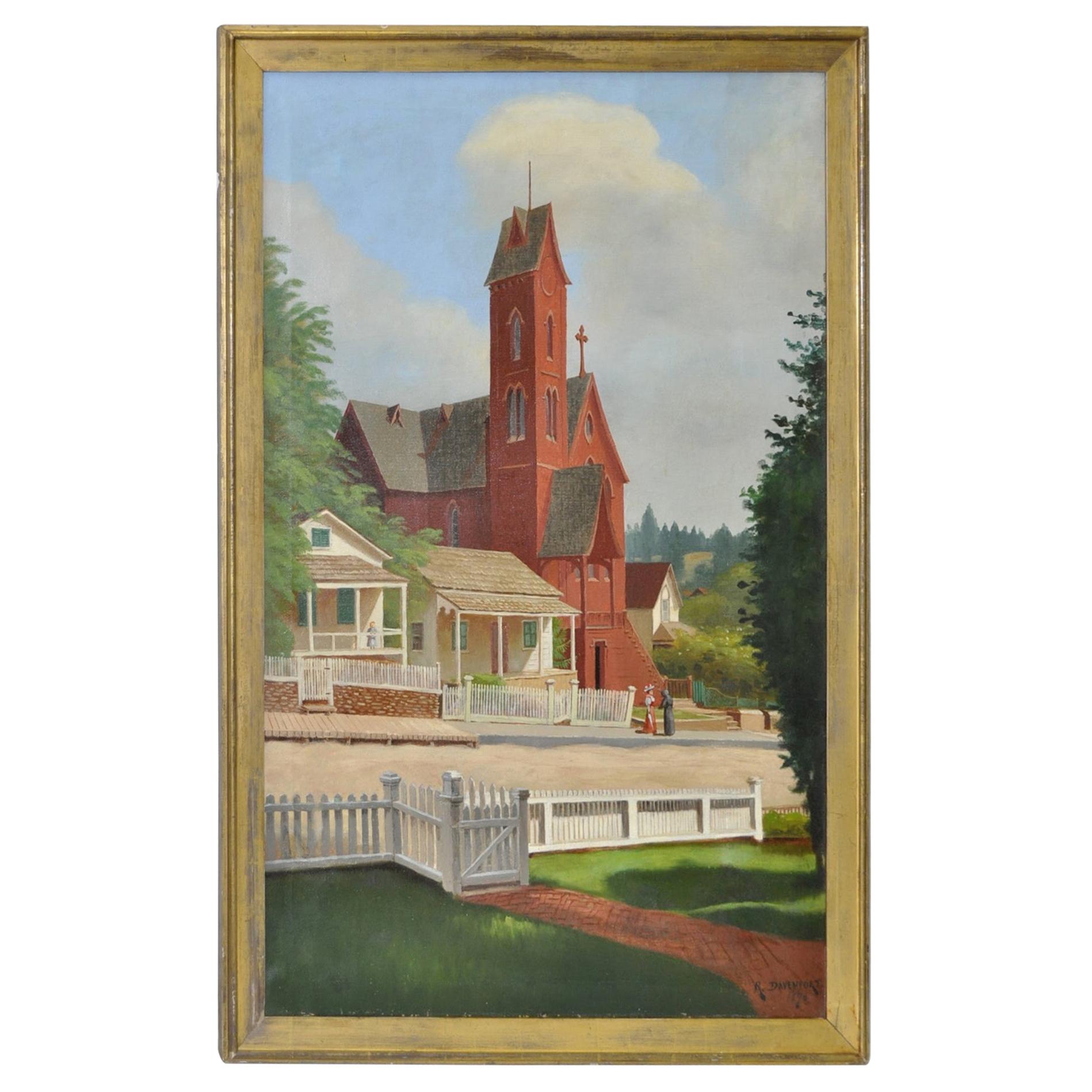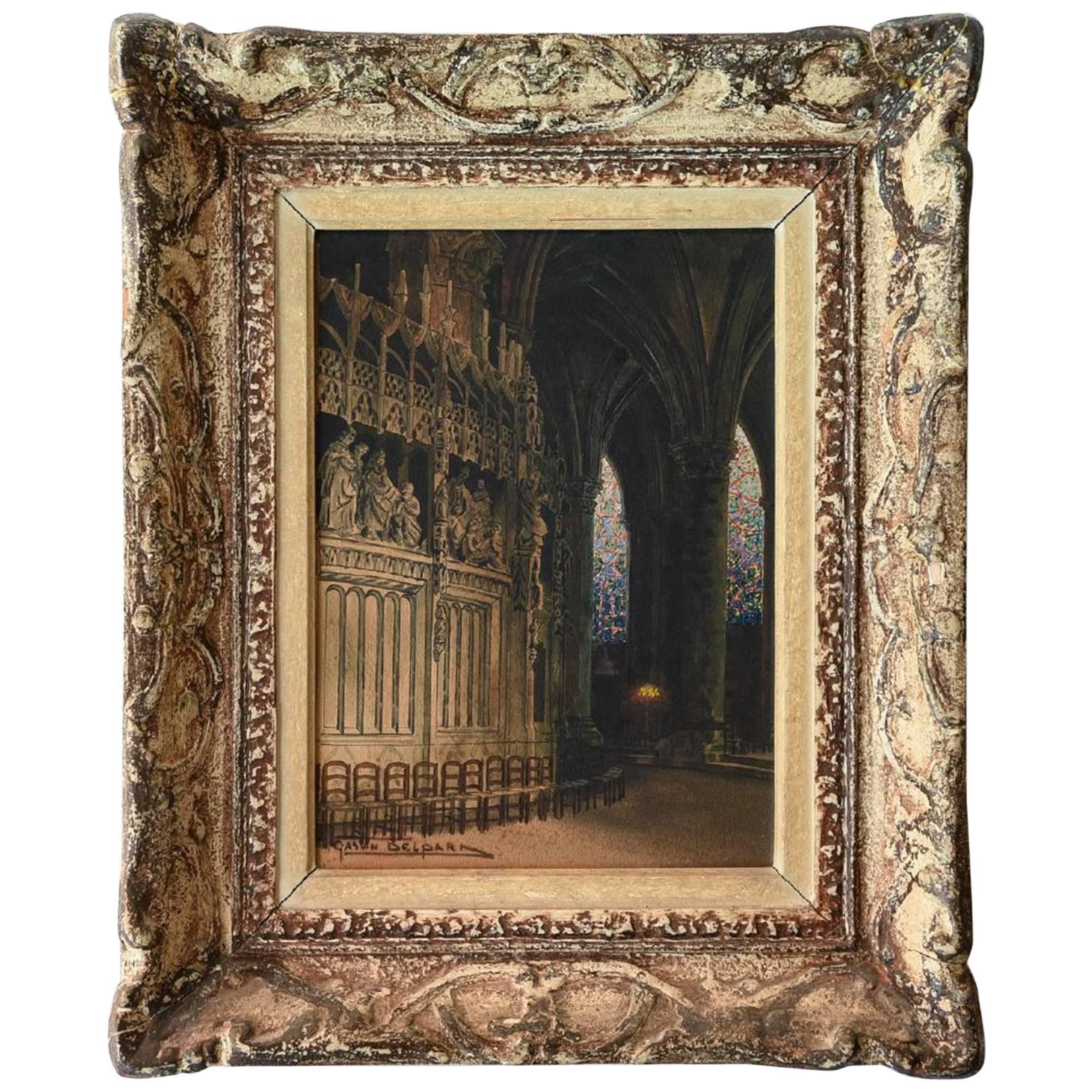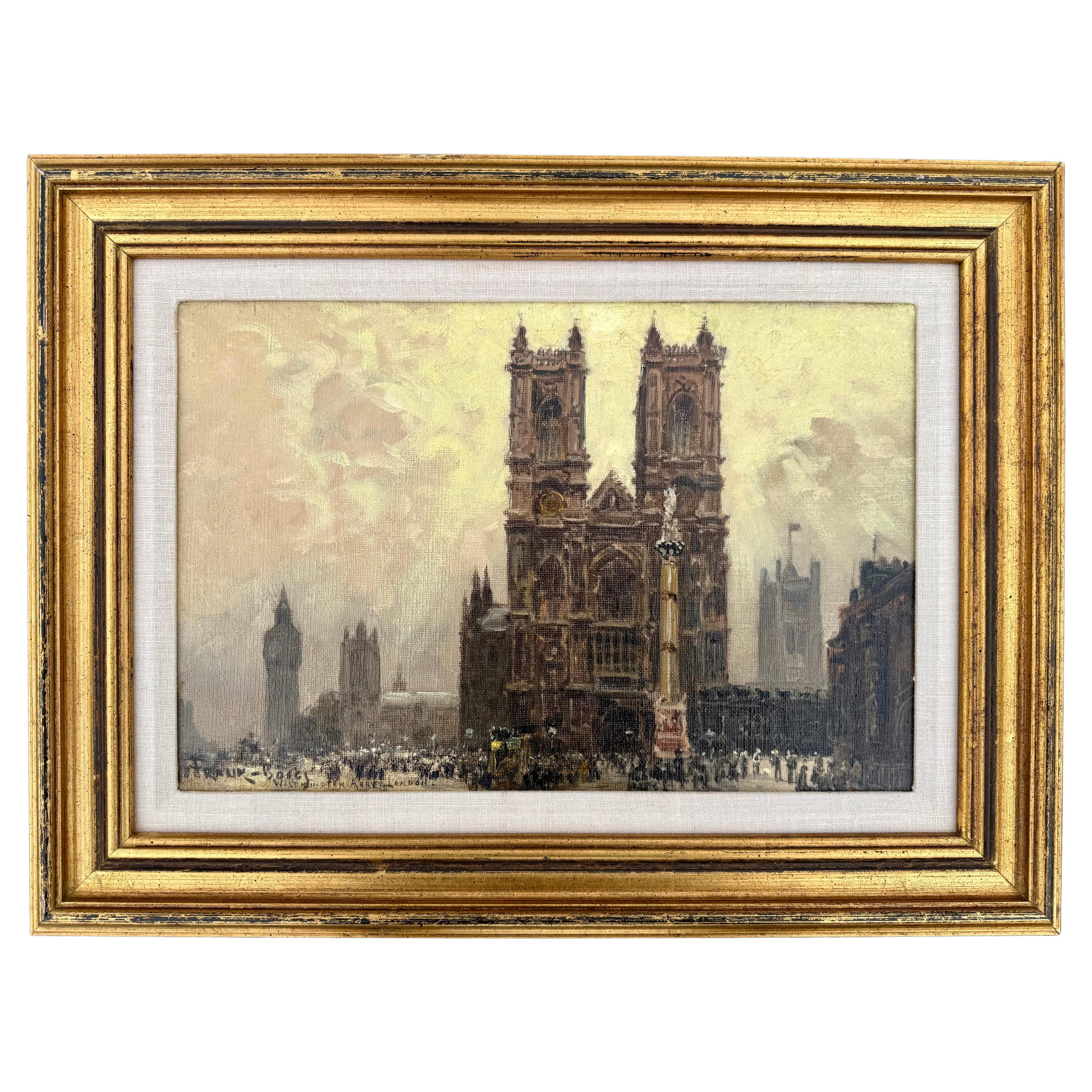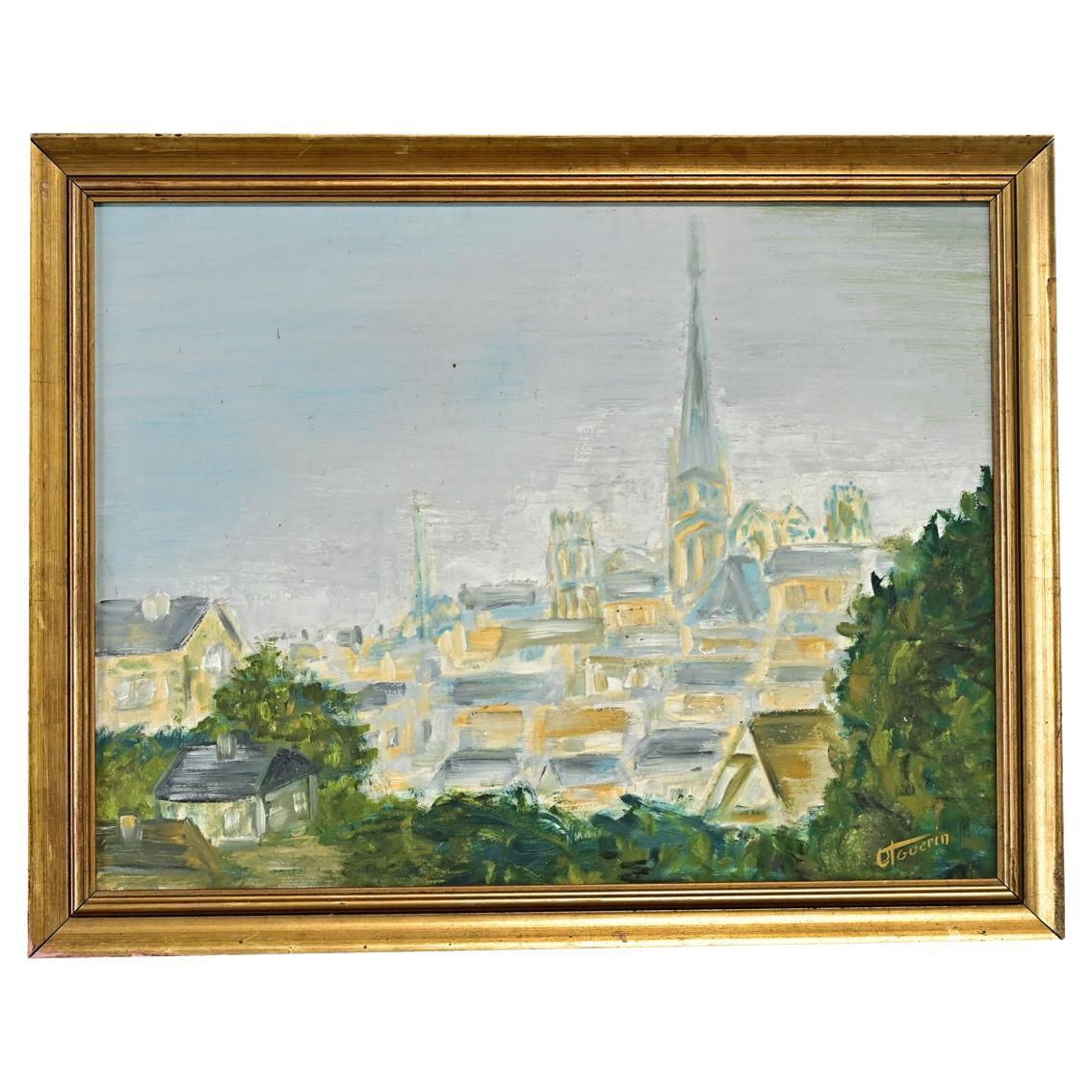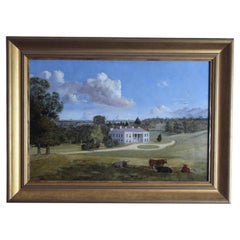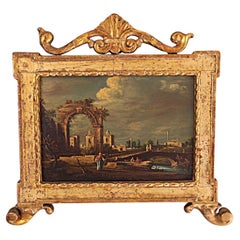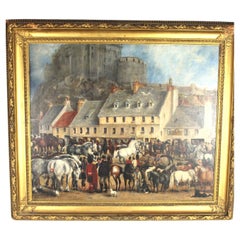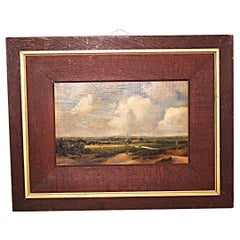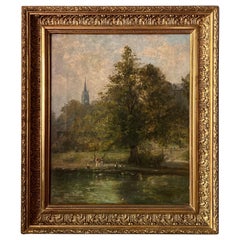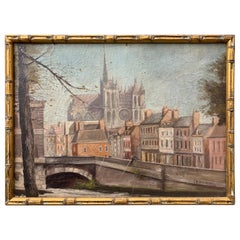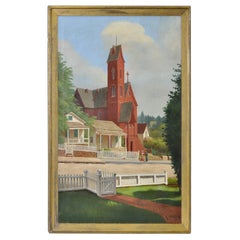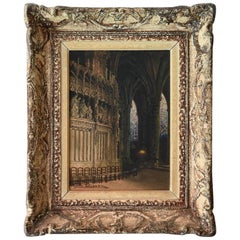Items Similar to Early 19th Century Panting of Wakefield Cathedral, Yorkshire —John Cawthorn
Want more images or videos?
Request additional images or videos from the seller
1 of 10
Early 19th Century Panting of Wakefield Cathedral, Yorkshire —John Cawthorn
$2,759.32
$3,449.1520% Off
£2,000
£2,50020% Off
€2,359.36
€2,949.2020% Off
CA$3,795.40
CA$4,744.2520% Off
A$4,218.82
A$5,273.5320% Off
CHF 2,211.42
CHF 2,764.2720% Off
MX$51,522.05
MX$64,402.5620% Off
NOK 27,608.27
NOK 34,510.3320% Off
SEK 25,974.23
SEK 32,467.7920% Off
DKK 17,609.56
DKK 22,011.9520% Off
About the Item
Early 19th Century Oil Painting of Wakefield Cathedral, Yorkshire — Attributed to John Cawthorn
Oil on canvas Attributed to John Cawthorn (British, active early 1800s) Circa 1810–1830
A striking and historically rich oil on canvas depicting Wakefield Cathedral in West Yorkshire, attributed to the early 19th-century British artist John Cawthorn, celebrated for his topographical views and architectural studies across Yorkshire.
This atmospheric work presents the cathedral (formerly All Saints Church) in crisp architectural detail, highlighting its Perpendicular Gothic features — soaring spire, arched stained-glass windows, and ornate battlements — all rendered with remarkable precision. Cawthorn’s attention to structural form and urban context is evident, positioning the cathedral as a civic landmark within the evolving streetscape of 19th-century Yorkshire.
The composition is animated by soft light and a dramatic cloudscape, while two figures in period dress lend scale and narrative to the scene. The warm, earthy palette and disciplined brushwork embody the aesthetic sensibilities of Yorkshire school painters, blending architectural fidelity with local character.
Key Features:
Subject: Wakefield Cathedral (All Saints Church), West Yorkshire, England
Region: Yorkshire topographical art
Medium: Oil on canvas
Date: Circa 1810–1830
Attribution: John Cawthorn (British, active early 19th century)
Style: English topographical and architectural painting
Condition: Surface wear consistent with age; unlined canvas with minor scuffing at edges
Presentation: Unframed; ready for museum-quality framing
This rare Yorkshire oil painting is an exceptional example of early 19th-century British architectural portraiture. A highly collectable artwork for connoisseurs of Yorkshire history, ecclesiastical architecture, and antique English landscapes.
- Dimensions:Height: 14.97 in (38 cm)Width: 22.84 in (58 cm)Depth: 1.58 in (4 cm)
- Style:George III (Of the Period)
- Materials and Techniques:
- Place of Origin:
- Period:
- Date of Manufacture:1810
- Condition:Repaired: The painting has been cleaned and restored. The canvas has been relined. some craclure.
- Seller Location:Seaford, GB
- Reference Number:1stDibs: LU10376245072222
About the Seller
New to 1stDibs
Joined in the past six months.
No Reviews Yet
Vetted Professional Seller
Every seller passes strict standards for authenticity and reliability
Established in 2021
1stDibs seller since 2025
Typical response time: 9 hours
- ShippingRetrieving quote...Shipping from: Seaford, United Kingdom
- Return Policy
Authenticity Guarantee
In the unlikely event there’s an issue with an item’s authenticity, contact us within 1 year for a full refund. DetailsMoney-Back Guarantee
If your item is not as described, is damaged in transit, or does not arrive, contact us within 7 days for a full refund. Details24-Hour Cancellation
You have a 24-hour grace period in which to reconsider your purchase, with no questions asked.Vetted Professional Sellers
Our world-class sellers must adhere to strict standards for service and quality, maintaining the integrity of our listings.Price-Match Guarantee
If you find that a seller listed the same item for a lower price elsewhere, we’ll match it.Trusted Global Delivery
Our best-in-class carrier network provides specialized shipping options worldwide, including custom delivery.More From This Seller
View AllEnglish School 19th Century Country House Landscape Oil Painting
Located in Seaford, GB
19th-century painting of Warlies House, Essex
This captivating mid-19th-century oil on panel painting exemplifies the idyllic charm of pastoral landscapes from the period, featuring...
Category
Antique 1870s English Victorian Paintings
Materials
Paint
$2,152 Sale Price
20% Off
Antique Venetian capriccio oil painting
Located in Seaford, GB
Francesco Guardi Venice Oil Painting – Venetian Art in the Manner of Guardi
Exquisite 19th-Century Venetian Oil Painting
Experience the timeless elegance of Venetian art with this r...
Category
Early 20th Century Paintings
Materials
Pine, Paint
$1,710 Sale Price
20% Off
19th-century Scotland Edinburgh Horse Fair Painting
By Rosa Bonheur
Located in Seaford, GB
A rare 19th-century painting of the Horsefair at the Grassmarket, Edinburgh, Scotland
Follower of Rosa Bonheur, oil on canvas
indistinctive collector wax seals verso.
19th-Century...
Category
Antique 1860s British High Victorian Paintings
Materials
Canvas
$8,277 Sale Price
20% Off
Dutch 19th century Landscape Painting
By Andreas Schelfhout
Located in Seaford, GB
This charming oil-on-paper painting captures a serene landscape near Haarlem, evocative of Andreas Schelfhout's masterful Dutch Romantic style. The work features a quintessentially D...
Category
Antique Late 19th Century Dutch Late Victorian Paintings
Materials
Paint, Paper
Early 19th century Capriccio Brazil School Painting
Located in Seaford, GB
Rare Early 19th century Capriccio view of Rio de Janeiro Painting
Probably painted circa 1810 by one of Jean-Baptiste Debret, Italian Students.
Painted on Sailcloth.
Historical Context of Early 19th Century Portuguese Colonial Brazil
1.1 Transition from Colony to Empire
During the early 19th century, Brazil underwent a seismic shift in its political status. Originally a colony under the Portuguese Empire, the arrival of the Portuguese Royal Court in Rio de Janeiro in 1808 rapidly elevated the city’s cultural and political importance. By 1815, Brazil was declared a kingdom united with Portugal, setting the stage for the emergence of the Empire of Brazil in 1822. This period of transformation—often termed the transitional period from colony to empire—fueled a wave of artistic production in cities like Rio de Janeiro.
1.2 European Artistic Influence in Brazil
With the French Artistic Mission in Rio (initiated in 1816) and the presence of various Portuguese and European artists, Brazilian art of the early 1800s began to reflect diverse influences, from neoclassical painting to the early rumblings of romanticism. Painters such as Jean-Baptiste Debret, and Nicolas-Antoine Taunay, and local luminaries like Manuel de Araújo Porto-Alegre contributed to the fine arts tradition in Brazil. Their works featured scenes of local life, portraits of Brazilian society, and imaginative vistas—sometimes referred to as “capriccios,” in which real elements were combined with artistic liberties to create an idealized panorama.
1.3 Rio de Janeiro as Cultural and Political Hub
Rio de Janeiro, often called the Imperial capital after Brazil’s independence, was home to foundational institutions like the Imperial Academy of Fine Arts (Academia Imperial de Belas Artes). Later evolving into the Escola de Belas Artes (School of Fine Arts in Rio), these academies nurtured the talents of emerging painters, who found patronage under the Royal Court and, subsequently, the Imperial Court. The city’s significance was further enhanced by the construction of significant buildings, the modernization of infrastructure, and the mingling of European courtly customs with the traditions of local inhabitants.
. Description of the Octagonal Oil on Canvas: A Capriccio View of Rio de Janeiro
2.1 Composition and Layout
The most striking characteristic of this 19th-century Brazilian art piece is its octagonal shape, a relatively unusual format that draws the viewer’s gaze toward its centre. The composition showcases Rio de Janeiro’s shoreline in the early 1800s, brimming with merchant ships and smaller boats anchored near the shore. On the sand, there is a bustling crowd of local people—men and women carrying food and goods on their heads, loading and unloading boats, and engaging in everyday commerce. The backdrop of soaring mountains suggests Rio’s iconic topography, embodying the landscape that famously defines the city.
2.2 Architectural and Religious Landmarks
On the left side, one can discern the silhouette of a church believed to be Santa Lucia, a significant religious structure in the heart of early 19th-century Rio. This element provides viewers with a tangible reference point, linking the scene to an actual location. However, because this painting is labelled as a “capriccio,” the artist might have taken creative liberties by rearranging or amplifying certain features of the city. The melding of real and idealized elements is characteristic of these imaginative vistas.
2.3 Evoking Daily Life in Colonial Rio
One of the painting’s greatest appeals lies in its portrayal of daily life during the colonial era. Men and women from various backgrounds populate the scene. Some appear to be carrying goods on their heads, a common practice in Brazil that has persisted through different centuries. Others appear to be haggling or trading near small vessels, revealing the commercial pulse of an active port city. This focus on local people, combined with the grandeur of merchant ships, captures the tension and synergy between the every day and the extraordinary—a hallmark of Brazilian colonial painting that balances the grand narratives of empire with the rhythms of ordinary life.
2.4 An Amalgamation of Neoclassical and Romantic Influences
Although academic art in early 19th century Brazil was highly influenced by neoclassicism, the onset of romanticism can be spotted in the emotional portrayal of the sky, the lively palette, and the dramatic emphasis on nature’s beauty (the mountains, in particular). This duality reflects the fine arts tradition in Brazil during the transitional phase when artists were embracing multiple styles. As part of the School of Rio or the Rio de Janeiro school, painters often integrated academic techniques learned from European masters with emerging local subjects and influences.
3. Institutions and Artistic Movements
3.1 Imperial Academy of Fine Arts
Originally known as the Royal School of Sciences, Arts, and Crafts, the Imperial Academy of Fine Arts in Rio de Janeiro was instrumental in shaping 19th-century Brazilian art. Influential artists and teachers from Portugal, France, and other European nations congregated at the Academy, imparting their expertise to native students. As the monarchy consolidated power, the Academy enjoyed royal patronage, leading to the creation of Imperial Academy-style works that combined European academic rigour with Brazilian-themed subject matter.
3.2 Impact of the French Artistic Mission
The French Artistic Mission, which arrived in 1816, played a pivotal role in introducing advanced European artistic techniques, thereby elevating the overall quality of painting in Brazil. Artists like Jean-Baptiste Debret not only documented Brazilian society but also spearheaded the development of a local visual identity that aligned with both academicism and the national context of a blossoming empire. Debret, alongside others such as Nicolas-Antoine Taunay, mentored Brazilian artists, sowing the seeds of what would become the Brazilian academic art movement.
3.3 Religious, Historical, and Landscape Paintings
In addition to everyday scenes and historical compositions, religious iconography remained crucial throughout Portuguese colonial and imperial Brazil. Churches were omnipresent in cityscapes like Rio de Janeiro. Many colonial-era Brazilian portraits...
Category
Antique Early 19th Century Brazilian Spanish Colonial Paintings
Materials
Canvas
$2,980 Sale Price
20% Off
Exquisite 19th Century English Still Life of wild flowers– Oil on Wood Panel
Located in Seaford, GB
A captivating and finely executed 19th-century English still life painting, rendered in oil on wood panel, depicting an abundant bouquet of mixed flowers in a terracotta urn. This hi...
Category
Antique 19th Century English High Victorian Paintings
Materials
Paint
You May Also Like
19th Century, English School Landscape O/C "Salisbury Cathedral"
Located in Atlanta, GA
English School, 19th century.
A fine quality English School oil painting on canvas of a duck pond which has a small family boarding a tiny boat. Surrounded by lush trees, a dirt pat...
Category
Antique 19th Century British Paintings
Materials
Canvas, Giltwood, Paint
$2,316 Sale Price
20% Off
Early French Oil Painting Of Notre Dame Cathedral In Faux Bamboo Frame, Paris
Located in Haddonfield, NJ
Late 19th century oil painting of Notre dame cathedral and Paris, seen from the seine river. With its original faux bamboo frame, signed "Rienzi".
Category
Antique Late 19th Century French Belle Époque Paintings
Materials
Canvas
19th Century "The Old Church" Original Oil Painting by R. Davenport
Located in San Francisco, CA
19th century oil on canvas signed R. Davenport.
A stately red brick church in a country town setting.
Oil on canvas dimensions 23 inches wide x 35 1/2 inches high.
Frame ...
Category
Antique Late 19th Century American Paintings
Materials
Canvas
19th Century Watercolor of a Cathedral
Located in Sheffield, MA
Watercolor on paper mounted on masonite board with ornate gilt frame.
Dimensions: (Board) H 13.5" x W 10"
Category
Antique 19th Century Paintings
Materials
Paper
"Westminster Abbey, London" by Frank Myers Boggs
By Frank Myers Boggs
Located in Wiscasset, ME
Oil on canvas, signed and inscribed in the lower left. This is a wonderful scene of Westminster Abbey in London with sunlight beaming down from above.
The Impressionist Frank Mye...
Category
Antique Late 19th Century English Victorian Paintings
Materials
Paint
Vintage Painting of a Church
Located in Baton Rouge, LA
A vivid French oil painting, signed by the artist, Guerin. This painting on board depicts a hillside view of a city with various homes and buildings, including a cathedral. Framed by...
Category
20th Century French Other Paintings
Materials
Giltwood, Paint
More Ways To Browse
Gothic Window Frame
Rare Antique Stained Glass Windows
Curtis Jere Chrome Sculpture
Danish Dog
Diamond Inlay Chest
Dollar Pattern
Drop Front Walnut Secretary
Eileen Gray Lacquer
Francois Gerard
French Bulldog Art
French Primitive Cabinet
French Rococo Bed
Furniture Polish For Birdseye Maple
Georgian Chest On Stand
Green Giraffe
Hand Painted Bed Queen
Hexagon Game Table
Naked Figurine
